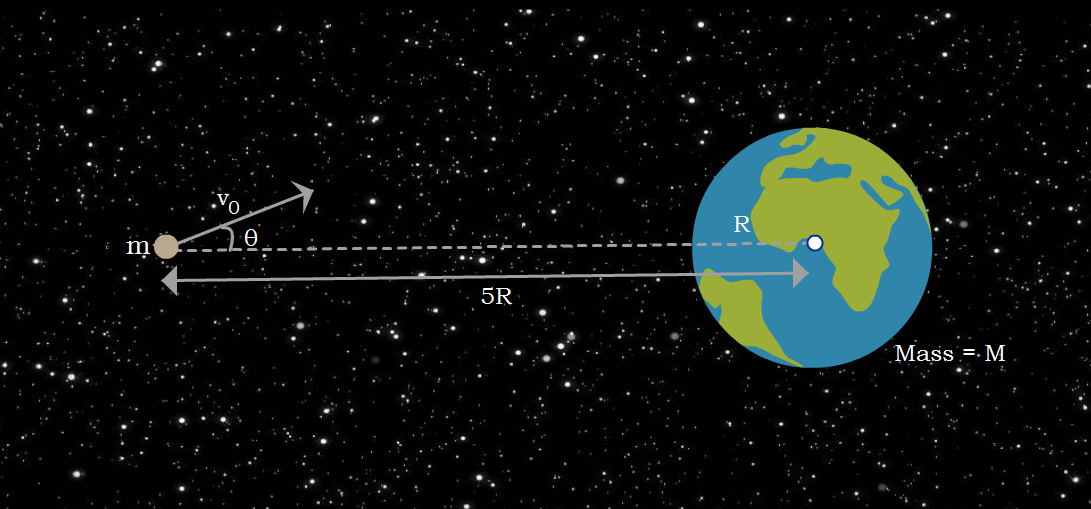That was another close call!

An asteroid of mass was seen at a distance of from the center of Earth with initial velocity making an angle of with the radial vector from the center of Earth. Due to the mutual gravitational interaction between Earth and the asteroid, the asteroid deviated from its original path, and afterwards it was seen that the asteroid just grazed the surface of Earth and moved on.
If can be expressed as where and are positive integers (not necessarily distinct) and and are coprime integer pairs.
Evaluate the value of .
Details and assumptions:
- Assume there are no other external bodies other than Earth and the asteroid. The only mutual force of gravitation that exists is between them.
- Neglect the size of the asteroid, i.e. treat it as a particle of mass .
- denotes the universal gravitational constant: .
- denotes the mass of Earth: .
- denotes the radius of Earth: .
- Assume that rotation and revolutions of Earth are absent for this problem.
- Assume that there is no atmosphere near the surface of Earth.
- Assume Earth is a uniform sphere with no geographical deformities or man-made structures.
The answer is 20.
This section requires Javascript.
You are seeing this because something didn't load right. We suggest you, (a) try
refreshing the page, (b) enabling javascript if it is disabled on your browser and,
finally, (c)
loading the
non-javascript version of this page
. We're sorry about the hassle.
Relevant wiki: Applying Kepler's Laws
Let V be the original velocity and v be velocity at the grazing area. Using the conservation of energy, we can write
2 1 m V 2 − 5 R G M m = 2 1 m v 2 − R G M m .
This gives, v = V 2 + 5 R 8 G M
Now, as the only force acting on the asteroid is the gravitational pull which passes through the center of the Earth. Therefore, its torque about the center of the Earth is zero and the angular moment of the asteroid will remain conserved. Hence, applying the Conservation of angular momentum , we can write
m V sin θ 5 R = m v R ⇒ v = 5 V sin θ .
Plugging this value of v in the above equation yields
sin θ = 5 V V 2 + 5 R 8 G M ⇒ θ = sin − 1 ( 1 + 5 R V 2 8 G M ) .
Comparing with the form for θ given in the question we get, a = 1 , b = 5 , c = 1 , d = 8 , and e = 5 which gives an answer of 2 0 .